Lung surfactants are instilled into the respiratory system of premature infants who do not have enough surfactant to ensure alveolar expansion. Learn about lung surfactants in this nursing pharmacology guide.
Table of Contents
- Lung Surfactants: Generic and Brand Names
- Disease Spotlight: Respiratory Distress Syndrome
- What are Lung surfactants?
- Therapeutic actions
- Indications of Lung surfactants
- Pharmacokinetics
- Contraindications and Cautions
- Adverse effects
- Nursing considerations for Lung surfactants
- Practice Quiz: Lung surfactants
- Recommended Resources
- See Also
- References and Sources
Lung Surfactants: Generic and Brand Names
Here is a table of the most commonly encountered lung surfactants, their generic names, and brand names:
- Lung surfactants
- beractant (Survanta)
- calfactant (Infasurf)
- poractant (Curosurf)
Disease Spotlight: Respiratory Distress Syndrome
Respiratory distress syndrome (RDS) causes obstruction at the alveolar level.
- It is frequently seen in premature infants who are delivered before their lungs have fully developed and while surfactant levels are still very low.
- A surfactant is necessary for lowering the surface tension in the alveoli so that they can stay open to allow the flow of gases.
- If surfactant levels are low, the alveoli do not expand and cannot receive air, leading to decreased gas exchange, low oxygen levels, and generalized distress throughout the body as cells do not receive oxygen that they need to survive.
- Treatment is aimed at instilling surfactant to prevent atelectasis and to allow the lungs to expand.
- Acute respiratory distress syndrome (ARDS) is characterized by progressive loss of lung compliance and increasing hypoxia.
- This syndrome typically results from a severe insult to the body, such as cardiovascular collapse, major burns, severe trauma, or rapid depressurization.
- Treatment of ARDS involves the reversal of the underlying cause of the problem combined with ventilation support.
What are Lung surfactants?
Lung surfactants are naturally occurring compounds or lipoproteins containing lipids and apoproteins that reduce the surface tension within the alveoli, allowing expansion of the alveoli for gas exchange.
Therapeutic actions
The desired actions of lung surfactants include:
- Used to replace the surfactant that is missing in the lungs of neonates with RDS.
Indications of Lung surfactants
Lung surfactants are indicated for the following:
- Rescue treatment of infants who have RDS.
- Prophylactic treatment of infants at high risk for development of RDS (birth weight of <1, 350g, birth weight >1, 350g who have evidence of respiratory immaturity).
- This drug is being tried in the treatment of adult RDS and with adults after near drowning.
Pharmacokinetics
These drugs are instilled directly into the trachea and begin to act immediately on instillation.
| Route | Onset | Peak |
| Intratracheal | Immediate | Hours |
| T 1/2: Unknown | ||
| Metabolization: Surfactant pathways |
Contraindications and Cautions
Because lung surfactants are used as emergency drugs in newborn, there are no contraindications.
Adverse effects
Adverse effects from the use of lung surfactants include:
- Cardiovascular: Patent ductus arteriosus, bradycardia, intraventricular hemorrhage, hypotension.
- Respiratory: Pneumothorax, pulmonary air leak, pulmonary hemorrhage, apnea.
- Systemic: Sepsis, infection.
Nursing considerations for Lung surfactants
Nursing considerations for patients taking lung surfactants include:
Nursing Assessment
History taking and physical exam of patients using lung surfactants include the following:
- Assess for possible contraindications and cautions: screen for the time of birth and exact weight to determine appropriate doses; because this drug is used as an emergency treatment, there are no contraindications to screen for.
- Perform a physical examination to establish baseline data for assessing the effectiveness of the drug and the occurrence of any adverse effects associated with drug therapy.
- Assess the skin temperature and color to evaluate perfusion.
- Monitor respirations, adventitious sounds, endotracheal tube placement and patency, and chest movements to evaluate the effectiveness of the drug and drug delivery.
- Evaluate blood pressure, pulse, and arterial pressure to monitor the status of the infant.
- Evaluate blood gases and oxygen saturation to monitor drug effectiveness.
- Assess temperature and complete blood count to monitor for sepsis.
Nursing Diagnosis and Care Planning
Nursing diagnosis related to drug therapy of lung surfactants might include the following:
- Decreased cardiac output related to cardiovascular and respiratory effects of the drug.
- Risk for injury related to prematurity and risk of infection.
- Ineffective airway clearance related to the possibility of mucus plugs.
- Deficient knowledge regarding drug therapy (for parents).
Nursing Implementation with Rationale
The nursing interventions for patients using lung surfactants include the following:
- Patient monitoring. Monitor the patient continuously during administration and until stable to provide life support measures as needed.
- Correct endotracheal tube placement. Ensure proper placement of the endotracheal tube with bilateral chest movement and lung sounds to provide adequate delivery of the drug.
- Review proper administration of drugs. Have staff view the manufacturer’s teaching video before regular use to review the specific technical aspects of administration.
- Suction the infant. Suction the infant immediately after administration, but do not suction for 2 hours after administration unless clinically necessary, to allow the drug time to work.
- Offer support. Provide support and encouragement to the parents of the patient, explaining the use of the drug in the teaching program, to help them cope with the diagnosis and treatment of their infant.
- Continue other measures. Continue other supportive measures related to the immaturity of the infant because this is only one aspect of medical care needed for premature infants.
Evaluation
Evaluation of the patient using lung surfactants include the following:
- Monitor patient response to the drug (improved breathing, alveolar expansion).
- Monitor for adverse effects (pneumothorax, patent ductus arteriosus, bradycardia, sepsis).
- Evaluate the effectiveness of the teaching plan and support parents as appropriate.
- Monitor the effectiveness of other measures to support patient and stabilize the patient.
- Evaluate the effectiveness of other supportive measures related to the immaturity of the infant.
Practice Quiz: Lung surfactants
Here’s a 5-item quiz for this lung surfactant study guide. Please visit our nursing test bank page for more NCLEX practice questions.
1. A nurse is preparing to give a lung surfactant to a 36 weeks old baby with a respiratory distress syndrome. Which of the following is the correct route of administration?
A. Intravenous
B. Intradermal
C. Intramuscular
D. Intratracheal
1. Answer: D. Intratracheal
- Option D: Lung surfactant is instilled through the catheter inserted into the newborn’s endotracheal tube.
- Options A, B, and C: Options B, C, and D are not the routes of administration for this medication.
2. A patient with acute respiratory distress syndrome (ARDS) is receiving oxygen by a nonrebreather mask, but arterial blood gas measurements still show poor oxygenation. As the nurse responsible for this patient’s care, you would anticipate a physician order for what action?
A. Administer furosemide (Lasix) 100 mg IV push stat
B. Perform endotracheal intubation and initiate mechanical ventilation
C. Call a code for respiratory arrest
D. Immediately begin continuous positive airway pressure (CPAP) via the patient’s nose and mouth
2. Answer: B. Perform endotracheal intubation and initiate mechanical ventilation.
- Option B: Usually at this stage, the patient is working very hard to breathe and may go into respiratory arrest unless health care providers intervene by providing intubation and mechanical ventilation to decrease the patient’s work of breathing.
3. The high-pressure alarm on a patient’s ventilator goes off. When you enter the room to assess the patient, who has ARDS, the oxygen saturation monitor reads 87% and the patient is struggling to sit up. Which action should you take next?
A. Manually ventilate the patient while assessing possible reasons for the high-pressure alarm
B. Reassure the patient that the ventilator will do the work of breathing for him
C. Insert an oral airway to prevent the patient from biting on the endotracheal tube
D. Increase the fraction of inspired oxygen on the ventilator to 100% in preparation for endotracheal suctioning
3. Answer: A. Manually ventilate the patient while assessing possible reasons for the high-pressure alarm
- Option A: Manual ventilation of the patient will allow you to deliver a FiO2 of 100% to the patient while you attempt to determine the cause of the high-pressure alarm.
- Options B, C, D: The patient may need reassurance, suctioning, and/or insertion of an oral airway, but the first step should be an assessment of the reason for the high-pressure alarm and resolution of the hypoxemia.
4. To improve respiratory status, which medication should you be prepared to administer to the newborn infant with respiratory distress syndrome (RDS)?
A. Decadron
B. Theolair
C. Exosurf
D. Proventil
4. Answer: C. Exosurf
- Option C: Exosurf neonatal is a form of synthetic surfactant. An infant with RDS may be given two to four doses during the first 24 to 48 hours after birth. It improves respiratory status, and research has shown a significant decrease in the incidence of pneumothorax when it is administered.
5. A nurse in the newborn nursery is monitoring a preterm newborn infant for respiratory distress syndrome. Which assessment signs, if noted in the newborn infant, would alert the nurse to the possibility of this syndrome?
A. The presence of a barrel chest with grunting
B. Hypotension and Bradycardia
C. Acrocyanosis and grunting
D. Tachypnea and retractions
5. Answer: D. Tachypnea and retractions.
- Option D: The infant with respiratory distress syndrome may present with signs of cyanosis, tachypnea or apnea, nasal flaring, chest wall retractions, or audible grunts.
Recommended Resources
Our recommended nursing pharmacology resources and books:
Disclosure: Included below are affiliate links from Amazon at no additional cost from you. We may earn a small commission from your purchase which will help support us. Thank you! For more information, check out our privacy policy.
Pharm Phlash! Pharmacology Flash Cards #1 BEST SELLER!
Test-yourself review cards put critical clinical information for nearly 400 of the top generic medications at your fingertips. And, you can count on them for accuracy, because each card is based on content from Davis’s Drug Guide for Nurses. Increase your test scores in pharmacology class.
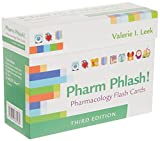
Focus on Pharmacology (8th Edition)
Focus on Nursing Pharmacology makes challenging concepts more approachable. Engaging learning features cultivate your clinical application, critical thinking and patient education capabilities. This updated 8th edition builds on your knowledge of physiology, chemistry and nursing fundamentals to help you conceptualize need-to-know information about each group of drugs.
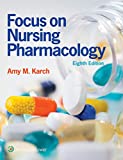
Pharmacology Made Incredibly Easy (Incredibly Easy! Series®)
Nursing pharmacology guide offers step-by-step guidance so you can grasp the fundamentals in enjoyable Incredibly Easy style. This is the perfect supplement to class materials, offering solid preparation for NCLEX® as well as a handy refresher for experienced nurses. Colorfully illustrated chapters offer clear, concise descriptions of crucial nursing pharmacology concepts and procedures.
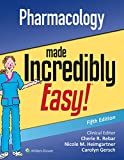
Lehne’s Pharmacology for Nursing Care (11th Edition)
The Eleventh Edition of Lehne’s Pharmacology for Nursing Care provides a thorough understanding of key drugs and their implications for nursing care. This text, written by renowned nursing educators, helps you comprehend and apply pharmacology principles. A clear and engaging writing style simplifies complex concepts, making even the most challenging pharmacology content enjoyable. We recommend this book if you want a comprehensive nursing pharmacology guide.
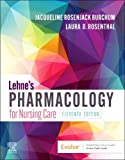
Nursing Drug Handbook
Nursing2023 Drug Handbook delivers evidence-based, nursing-focused drug monographs for nearly 3700 generic, brand-name, and combination drugs. With a tabbed, alphabetical organization and a “New Drugs” section, NDH2023 makes it easy to check drug facts on the spot.
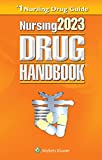
Pharmacology and the Nursing Process
The 10th edition of Pharmacology and the Nursing Process offers practical, user-friendly pharmacology information. The photo atlas contains over 100 unique illustrations and photographs depicting drug administration techniques. Updated drug content reflects the most recent FDA drug approvals, withdrawals, and therapeutic uses.
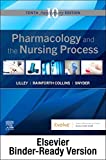
Mosby’s Pharmacology Memory NoteCards: Visual, Mnemonic, and Memory Aids for Nurses
The 6th edition of Mosby’s Pharmacology Memory NoteCards: Visual, Mnemonic, & Memory Aids for Nurses incorporates illustrations and humor to make studying easier and more enjoyable. This unique pharmacology review can be utilized as a spiral-bound notebook or as individual flashcards, making it ideal for mobile study.
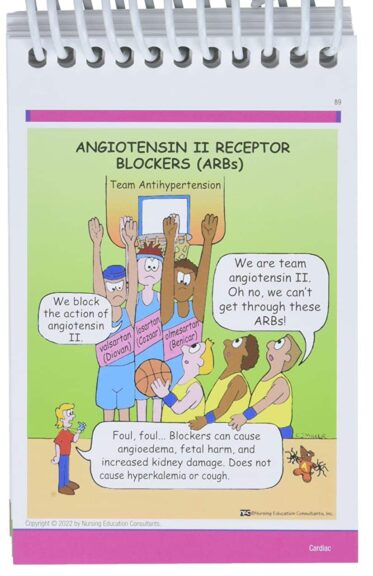
See Also
Here are other nursing pharmacology study guides:
- Nursing Pharmacology – Study Guide for Nurses
Our collection of topics related to nursing pharmacology - Pharmacology Nursing Mnemonics & Tips
These nursing mnemonics aim to simplify the concepts of pharmacology through the use of a simple, concise guide. - Generic Drug Name Stems Cheat Sheet
Learn about these generic drug name stems to help you make sense of drugs easier! - Common Drugs and Their Antidotes
A guide to drug antidotes that nurses should be familiar about. - IV Fluids and Solutions Guide & Cheat Sheet
Get to know the different types of intravenous solutions or IV fluids in this guide and cheat sheet. - Drug Dosage Calculations NCLEX Practice Questions (100+ Items)
Care to take the challenge? This quiz aims to help students and registered nurses alike grasp and master the concepts of medication calculation.
Drug Guides NEW!
Individual drug guides and nursing considerations for the most common medications used in nursing pharmacology:
- Acetaminophen (Tylenol)
- Aspirin
- Atorvastatin (Lipitor)
- Enoxaparin (Lovenox)
- Furosemide (Lasix)
- Gabapentin
- Hydromorphone (Dilaudid)
- Lisinopril
- Metoprolol
- Morphine
Gastrointestinal System Drugs
Respiratory System Drugs
- Antihistamines
- Bronchodilators and Antiasthmatics
- Decongestants
- Expectorants and Mucolytics
- Inhaled Steroids
- Lung Surfactants
Endocrine System Drugs
- Adrenocortical Agents
- Antidiabetic Agents
- Glucose-Elevating Agents
- Hypothalamic Agents
- Insulin
- Parathyroid Agents: Bisphosphonates, Calcitonins
- Pituitary Drugs
- Sulfonylureas
- Thyroid Agents
Autonomic Nervous System Drugs
- Adrenergic Agonists (Sympathomimetics)
- Adrenergic Antagonists (Sympatholytics)
- Anticholinergics (Parasympatholytics)
- Cholinergic Agonists (Parasympathomimetics)
Immune System Drugs
Chemotherapeutic Agents
- Anthelmintics
- Anti-Infective Drugs
- Antibiotics
- Antifungals
- Antineoplastic Agents
- Antiprotozoal Drugs
- Antiviral Drugs
Reproductive System Drugs
Nervous System Drugs
- Antidepressants
- Antiparkinsonism Drugs
- Antiseizure Drugs
- Anxiolytics and Hypnotic Drugs
- General and Local Anesthetics
- Muscle Relaxants
- Narcotics, Narcotic Agonists, and Antimigraine Agents
- Neuromuscular Junction Blocking Agents
- Psychotherapeutic Drugs
Cardiovascular System Drugs
References and Sources
References and sources for this study guide about Lung Surfactants.
- Barnes, P. J., & Pedersen, S. (1993). Efficacy and safety of inhaled corticosteroids in asthma. American Review of Respiratory Disease, 148(4_pt_2), S1-S26. [Link]
- Hinkle, J. L., & Cheever, K. H. (2018). Brunner and Suddarth’s textbook of medical-surgical nursing. Wolters kluwer india Pvt Ltd.
- Karch, A. M., & Karch. (2011). Focus on nursing pharmacology. Wolters Kluwer Health/Lippincott Williams & Wilkins. [Link]
- Katzung, B. G. (2017). Basic and clinical pharmacology. McGraw-Hill Education.
- Lehne, R. A., Moore, L. A., Crosby, L. J., & Hamilton, D. B. (2004). Pharmacology for nursing care.
- Zasadzinski, J. A., Ding, J., Warriner, H. E., Bringezu, F., & Waring, A. J. (2001). The physics and physiology of lung surfactants. Current Opinion in Colloid & Interface Science, 6(5-6), 506-513. [Link]

Comment:Marianne good afternoon and happy new month I want to commend you for the good work you are doing.I know it is real hardwork to combine all these aspects and still do them well.
I want to say,well done .
Bridget Obinna